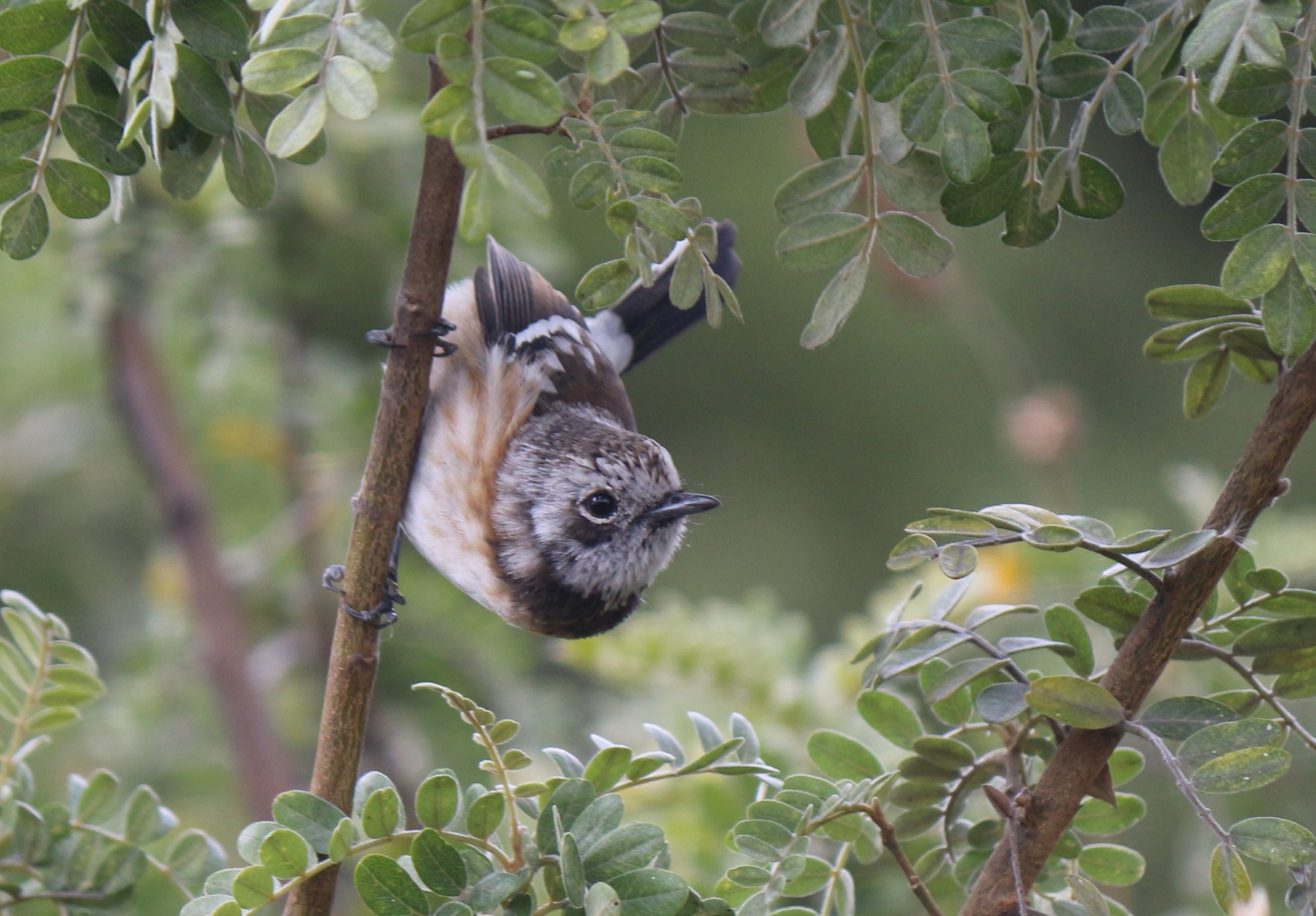Hawaiʻi ʻElepaio

Names
- ʻŌlelo Hawaiʻi: Hawaiʻi ʻElepaio
- Scientific: Chasiempis sandwichensis
Song
Conservation Status
- State Recognized as Endemic
- NatureServe Heritage Rank G3—Vulnerable
- IUCN Red List Ranking—Vulnerable
- Revised Recovery Plan for Hawaiian Forest Birds—USFWS 2006
Species Information
The Hawai‘i ‘elepaio is a small, adaptable monarch flycatcher (Family: Monarchiade) endemic to the island of Hawai‘i. ‘Elepaio also occur on Kaua‘i (C. sclateri) and O‘ahu (C. ibidis); the latter is federally listed as endangered. Some scientists recognize three subspecies on the island of Hawai‘i (C.s. sandwichensis, C. s. ridgewayi, and C. s. bryani). Adults are dark brown above and white below with variable amounts of brown streaking; males have black throats and females have white throats. The bird’s name is derived from its primary song which is a shrill whistle given only by males. ‘Elepaio forage in the air, on the ground, logs, rock crevices, snags, and all parts of trees. They use a diversity of foraging maneuvers likely dependent on habitat type: they capture arthropods by flycatching, glean while perched or hovering, and in direct pursuit, and may prefer ‘ōhi‘a (Metrosideros polymorpha) and kāwa’u (Ilex anomola) for foraging. Pairs remain together year-round, and long-term pair bonds are common; one pair was together for 11 years. Unlike Hawaiian honeycreepers, both males and females participate almost equally in all aspects of rearing. Finely woven cup nests are built in ‘ōhi‘a and in other trees in proportion to their availability. They usually lay two eggs, and second nests are attempted, often while chicks from first are still being fed. Young are fed by parents for at least a month, but remain on their natal territory for up to ten months.
Distribution
Occurs in most forested areas above 600 meters (2,000 feet). Isolated populations occur in Kohala and on the western slope of Mauna Kea. Historical distribution likely included all forested areas of the island.
Habitat
A variety of forest types and elevations, but most common in wet or mesic forests at higher elevations. Highest densities occur in ‘ōhi‘a or mixed ‘ōhi‘a-koa (Acacia koa) forests above 1,100 meters (3,600 feet). Much of the current range is managed by State and federal agencies or private conservation partnerships.
Threats
- Predation. On O‘ahu, predation by black rats (Rattus rattus) has been implicated in the loss of nests and death of adult females, and rat control in these populations resulted in large increases in nest success and in the survival of adult females.
- Disease. Avian pox reduces nesting success and adult survival. On O‘ahu, annual survival and reproductive success of birds with active pox lesions are lower compared to healthy birds; no information is available on the effect of avian malaria.
- Habitat loss and degradation. Historical habitat loss and degradation, especially at low elevations, is a major cause of declines. In Hakalau Forest National Wildlife Refuge, population densities are lower in degraded, open forests than in intact, dense forests.
Plans & Projects
Additional Resources
For more information and references visit the DLNR State Wildlife Action Plan factsheets. DOFAWʻs species pages and State Wildlife Action Plan fact sheets are provided for general information and are not meant to be a citable, original source of data. If you are a student, researcher, or writer looking for a citable source, please explore the references below or find other original data sources, rather than citing these webpages. The references below were provided by the authors of the State Wildlife Action Plan fact sheets at the time of drafting:
- IUCN Red List of Threatened Species. 2015. Version 2014.3. Available at: www.iucnredlist.org. (Accessed May 2015).
- Scott JM, Mountainspring S, Ramsey FL, Kepler CB. 1986. Forest bird communities of the Hawaiian islands: their dynamics, ecology and conservation. Lawrence, (KS): Cooper Ornithological Society.
- U.S. Fish and Wildlife Service. 2006. Revised Recovery plan for Hawaiian forest birds. Portland, (OR): U.S. Fish and Wildlife Service.
- VanderWerf EA. 1998. ‘Elepaio (Chasiempis sandwichensis). In The Birds of North America, No. 344 (Poole A, Gill F, editors.). Philadelphia, (PA): The Academy of Natural Sciences; and Washington DC: The American Ornithologists’ Union.


